Home> Company News> How Hydraulic Pumps Work - The Science Explained
Hydraulic pumps are widely used in various industries, including construction, agriculture, mining, and manufacturing, to provide the force required to operate heavy machinery and equipment. They are essential components of hydraulic systems, and understanding their function and operation is crucial in maintaining their optimal performance. In this tutorial, we will explain how hydraulic pumps work and the scientific principles behind their operation.
Hydraulic pumps play a critical role in powering various types of machinery, from excavators and bulldozers to cranes and tractors. Without hydraulic pumps, these machines would not be able to move, lift, or perform any other tasks that require the application of force. Therefore, it's essential to understand how hydraulic pumps work to keep these machines running smoothly and efficiently.
The purpose of this tutorial is to explain how hydraulic pumps work and the underlying scientific principles that govern their operation. By the end of this tutorial, you will have a better understanding of hydraulic pumps' basic principles, how they work, and the factors that affect their performance.
Understanding the basics of hydraulic pumps
Hydraulic pumps are devices that convert mechanical energy into hydraulic energy. They are commonly used in different industrial applications to provide the necessary force to operate heavy machinery and equipment.
There are two main types of hydraulic pumps: positive displacement and non-positive displacement pumps. Positive displacement pumps work by trapping a specific amount of fluid and moving it from the inlet to the outlet port. These pumps can be further classified into gear, piston, and vane pumps.
Gear pumps consist of two gears that mesh together and move fluid from the inlet to the outlet port. Piston pumps use reciprocating pistons to move fluid, while vane pumps use a rotating cam and vanes to move fluid.
Non-positive displacement pumps work by using the kinetic energy of the fluid to move it from the inlet to the outlet port. These pumps can be classified into centrifugal and axial pumps. Centrifugal pumps use a rotating impeller to create a flow of fluid, while axial pumps use rotating blades to move fluid.
Understanding the different types of hydraulic pumps and their functions is important in selecting the right pump for a specific application. Each type of pump has unique features and applications, and choosing the right pump can help optimize performance and efficiency.
How a hydraulic pump works
A hydraulic pump works by converting mechanical energy into hydraulic energy, which is then used to power various hydraulic systems. The hydraulic pump's operation involves several steps, and each step plays a crucial role in the pump's overall performance.
The pump's operation starts when the motor, either an electric motor or an engine, starts rotating the pump's shaft. The rotation of the pump's shaft then turns the impeller or rotor, which is responsible for creating a vacuum on the pump's inlet side, sucking the fluid from the reservoir into the pump.
As the impeller rotates, it pushes the fluid towards the pump's outlet port. The fluid then enters the pump's housing, where it is compressed by the pump's internal mechanism, either the gear or piston assembly.
After the fluid is compressed, it is forced out of the pump's outlet port and into the hydraulic system. The hydraulic system then uses the fluid to power various actuators, such as hydraulic cylinders or motors, which convert the fluid's energy into mechanical force.
The pump's performance depends on several factors, such as the fluid's viscosity, the pump's design, and the operating conditions. Understanding the pump's working principle and the role of each component is crucial for maintaining optimal performance and identifying any issues that may arise.
The science behind hydraulic pumps
To understand the science behind hydraulic pumps, we need to first look at Pascal's law, which states that pressure exerted on a confined fluid is transmitted undiminished in all directions. In hydraulic systems, this law is applied to create force and motion.
In a hydraulic pump, mechanical energy is converted into hydraulic energy, which is then used to create motion or force. The pump accomplishes this by using the mechanical energy to create pressure on the fluid, which is then transmitted to the rest of the hydraulic system.
To create this pressure, the pump uses the principle of displacement, where the volume of the fluid is changed by the movement of a piston or other mechanical element. The pump's displacement creates an area of low pressure, which then draws fluid into the pump. This fluid is then compressed and forced out of the pump at a higher pressure, creating hydraulic energy.
The pump's reservoir stores the fluid and serves as a means to cool the fluid, as well as provide a space for any air or impurities to separate from the fluid. The pump's valves control the flow of the fluid, allowing it to enter or exit the pump as necessary. The actuators, such as cylinders or motors, then use the hydraulic energy to create force or motion.
In hydraulic systems, force is directly proportional to pressure and area. This means that a small force applied to a small area will create a large pressure, while the same force applied to a large area will create a lower pressure. This relationship between force, pressure, and area is what makes hydraulic systems so useful in various applications, where large forces need to be created with minimal effort.
Fluid properties, such as viscosity, compressibility, and density, also play a crucial role in hydraulic systems. Viscosity refers to the fluid's resistance to flow and affects the flow rate and pressure drop in the system. Compressibility refers to how much the fluid's volume changes in response to pressure changes and affects the system's response time and stability. Density affects the system's weight and affects the pump's ability to move the fluid.
Understanding the scientific principles behind hydraulic pumps is crucial in selecting the right pump for a specific application and maintaining its optimal performance. It also helps in troubleshooting any issues that may arise and ensuring the safe and efficient operation of hydraulic systems.

Factors Affecting Hydraulic Pump Performance
Hydraulic pumps are complex machines that rely on several factors for optimal performance. Some of the most important factors affecting hydraulic pump performance include temperature, fluid viscosity, and pump speed.
Temperature
Temperature has a significant impact on hydraulic pump performance. When the temperature rises, the viscosity of the hydraulic fluid decreases, which can lead to leakage and pump failure. Conversely, at low temperatures, the viscosity of the fluid increases, which can cause the pump to struggle to push the fluid through the system.
To maintain optimal hydraulic pump performance, it is essential to monitor the temperature of the hydraulic fluid. If the temperature is too high, it may be necessary to install a cooling system or reduce the pump speed to prevent overheating. If the temperature is too low, a heating system may be required to keep the hydraulic fluid flowing smoothly.
Fluid Viscosity
The viscosity of the hydraulic fluid is another critical factor affecting pump performance. Viscosity refers to the fluid's resistance to flow, and it plays a crucial role in the pump's ability to move the fluid through the system. A fluid with low viscosity will flow more easily through the system, while a fluid with high viscosity will be more challenging to move.
The ideal viscosity for hydraulic fluid depends on the specific pump and application. It is crucial to choose the right hydraulic fluid viscosity to ensure optimal pump performance. If the viscosity is too low, the pump may not provide enough force to move the fluid through the system, leading to cavitation and other issues. If the viscosity is too high, the pump may not be able to generate enough pressure to meet the system's requirements.
Pump Speed
Pump speed is another critical factor affecting hydraulic pump performance. The speed of the pump affects the pressure and flow rate of the hydraulic fluid. Higher pump speeds result in higher flow rates and pressure, while lower pump speeds result in lower flow rates and pressure.
The ideal pump speed depends on the specific application and system requirements. It is essential to select the right pump speed to ensure optimal pump performance. If the pump speed is too low, the fluid may not move through the system quickly enough, leading to reduced performance. If the pump speed is too high, the pump may generate excessive pressure, leading to leaks and other issues.
Pump Performance Curves
To select the right pump for a specific application, it is essential to understand pump performance curves. Pump performance curves provide detailed information about the pump's flow rate, pressure, and efficiency at various operating speeds and pressures.
By analyzing the pump performance curves, engineers and technicians can select the right pump for the specific application and ensure optimal performance. Additionally, performance curves can help in identifying issues with the pump, such as reduced flow rate or pressure, and determining the appropriate solutions.
In conclusion, several factors affect hydraulic pump performance, including temperature, fluid viscosity, and pump speed. It is crucial to monitor and adjust these factors to ensure optimal pump performance and prevent pump failure. By understanding the pump performance curves and selecting the right pump for the specific application, engineers and technicians can ensure the system operates efficiently and reliably.
Maintenance and troubleshooting
Regular maintenance and troubleshooting are crucial to ensure the optimal performance and longevity of hydraulic pumps. In this section, we'll discuss some routine maintenance procedures, common problems that can occur with hydraulic pumps, and troubleshooting techniques.
Routine maintenance procedures
Regular maintenance of hydraulic pumps can prevent expensive breakdowns and downtime. Here are some essential maintenance procedures that should be performed on a regular basis:
1. Check fluid levels
Hydraulic pumps require an adequate amount of fluid to function correctly. Low fluid levels can cause pumps to overheat and fail. Regularly check the fluid level in the reservoir and top off if necessary.
2. Change filters
Filters remove dirt and debris from hydraulic fluid, preventing contamination of the system. Over time, filters can become clogged, reducing the system's efficiency. Regularly inspect and change filters as needed.
3. Inspect for leaks
Leaks can be caused by damaged seals or fittings, leading to a loss of fluid and reduced system pressure. Inspect the hydraulic pump for leaks and replace any damaged components.
4. Check belts and pulleys
Belts and pulleys transfer power from the motor to the hydraulic pump. Check for signs of wear and replace them if necessary.
5. Inspect hoses and fittings
Hoses and fittings can become damaged or worn over time, leading to leaks and reduced performance. Regularly inspect and replace any damaged hoses or fittings.
Common problems with hydraulic pumps
Despite regular maintenance, hydraulic pumps can encounter various problems that affect their performance. Here are some common issues and their causes:
1. Leaks
Leaks can be caused by damaged seals or fittings, worn hoses or connectors, or cracks in the pump housing.
2. Overheating
Overheating can be caused by low fluid levels, dirty fluid, or a malfunctioning cooling system.
3. Cavitation
Cavitation occurs when air or other gases become trapped in the hydraulic fluid, causing bubbles to form. These bubbles can collapse, creating shock waves that damage the pump's components.
4. Reduced performance
Reduced performance can be caused by worn or damaged components, low fluid levels, or dirty filters.
Troubleshooting techniques
Troubleshooting hydraulic pump issues requires a systematic approach to identify the cause of the problem. Here are some techniques to help diagnose and resolve pump issues:
1. Inspect for leaks
Inspect the pump and system components for any visible signs of leaks. Repair or replace any damaged components.
2. Check fluid levels
Check the hydraulic fluid level in the reservoir and top off if necessary.
3. Check filters
Inspect and replace any dirty or clogged filters.
4. Check for air in the system
Bleed the system of any air that may be trapped in the fluid.
5. Check for damaged components
Inspect hoses, seals, and fittings for any signs of wear or damage. Replace any damaged components.
By following these maintenance procedures and troubleshooting techniques, you can keep your hydraulic pump functioning correctly and prevent any costly breakdowns or downtime.

Hydraulic pumps are critical components used in various industrial applications, making them a crucial part of many systems. This tutorial aimed to explain the science behind hydraulic pumps and their operation, along with common maintenance and troubleshooting techniques.
We started by discussing the widespread use of hydraulic pumps in different industries and systems, highlighting their importance. We then moved on to explain the basics of hydraulic pumps, including their definition, function, and the types available, such as gear, piston, and vane pumps.
Next, we dove into the details of how hydraulic pumps work and the roles of their components, such as the reservoir, pump, valves, and actuators. We also discussed the underlying scientific principles behind hydraulic pumps, including Pascal's law and the relationships between force, pressure, and area in hydraulic systems.
In addition to understanding the science behind hydraulic pumps, it's crucial to consider factors that affect pump performance. We explained how temperature, fluid viscosity, and pump speed can impact pump efficiency, and discussed the importance of pump performance curves in selecting the right pump for a specific application.
We also covered the importance of routine maintenance procedures for hydraulic pumps, along with common problems that can occur, such as leaks, cavitation, and fluid contamination. We provided troubleshooting tips and techniques for identifying and resolving pump issues.
In conclusion, understanding how hydraulic pumps work and their underlying scientific principles is essential for proper maintenance and troubleshooting. By following the steps outlined in this tutorial, you can ensure the optimal performance of your hydraulic pump and minimize downtime. If you encounter any issues with your hydraulic pump, it's always best to seek professional help to avoid further damage.


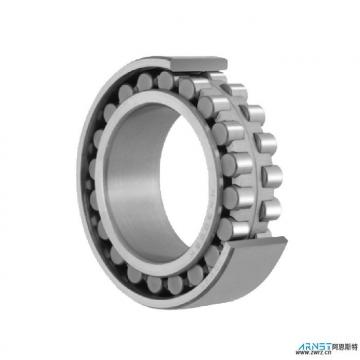 CRBH12025AUU Crossed Roller Bearing
CRBH12025AUU Crossed Roller Bearing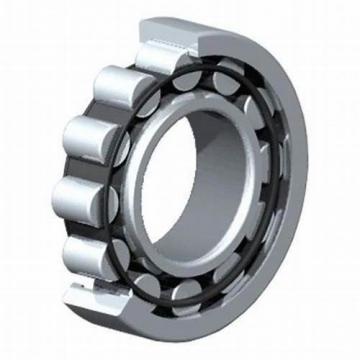 CRBH14025AUU Crossed Roller Bearing
CRBH14025AUU Crossed Roller Bearing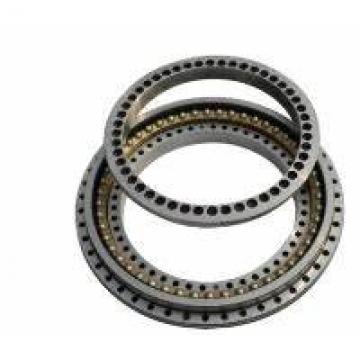 CRBH8016A Crossed roller bearing
CRBH8016A Crossed roller bearing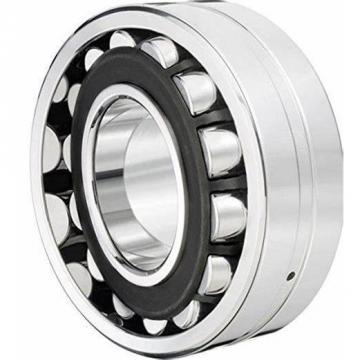 CRBH9016A Crossed roller bearing
CRBH9016A Crossed roller bearing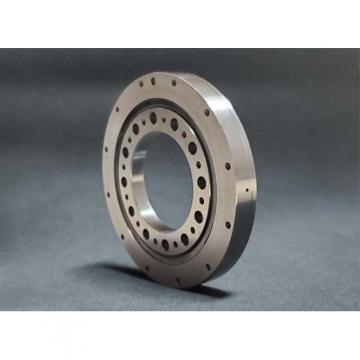 CRBH13025AUU Crossed Roller Bearing
CRBH13025AUU Crossed Roller Bearing